by Joanne Ivancic* (Advanced Biofuels USA) Not only is the Manta Biofuel system a way to grow, harvest and process algae into oil that can be used for heating or powering heavy duty engines or ocean-going vessels, or as a feedstock for refineries; Dr. Ryan Powell sees the Manta Biofuel system as a way for farmers to capture and treat high nutrient farm runoff before it enters watershed streams, preventing algal blooms before they start.
But for Powell, co-founder of Manta Biofuel, it's not just about money. Sure, everyone needs to make a living; Powell’s motivation is more than that, and may be representative of a new generation of innovators, leaders and just ordinary people. Powell wants to invest his life in mitigating the horrors that will accompany the effects of climate change—the pain of people leaving their homes as they flee rising water levels or severe drought and the disease and the war and suffering those bring.
Forget the damage to property values; Powell sees how higher incidence of severe droughts and flooding will lead to devastation and wars in the world his children will inherit. And he wants to be sure that he tried to make a better world for them. Manta Biofuel is how he will accomplish that.
A Maryland Story
This is the story about Powell's efforts and the efforts of the team working at Manta Biofuel in central Maryland. It’s about transitioning from a fossil-based to a renewable energy future while also solving other problems.
In addition, it’s a typical story that is rarely told about the twists and turns between the inception of an idea, something that has never been done before (not just doing something better), to something transformative, not just disruptive. It’s about making that idea sustainable (economically, socially and environmentally) and successful as a business in a world with a changing climate, a climate that never existed before.
Vision, Confidence, Hope
It takes vision, persistence, confidence and a serious dose of optimism and hope amid depressing economic realities and climate change forecasts. It also takes a bit of audacity to think about taking even a small corner of the energy market dominated by internationally established, well-financed and politically powerful oil/gas/coal/fossil energy interests.
With 5 years of work behind them, financially supported by state and federal programs such as the Maryland Industrial Partnership (MIP), Maryland Technology Development Corporation (TEDCO) and the U.S. Department of Energy, Powell and his team of engineers, technicians and business partners have brought their bench-based work to the great outdoors, to agriculture. Here the prototype technology is taking wild, natural algae or purpose grown algae and turning it into the building blocks of energy, fuel, chemicals and products which are now made with fossil carbon.
The Manta team has repurposed 15 acres of old fish hatchery ponds in the Maryland countryside for use as algae agriculture and algae conversion to fuel oil or biocrude using proprietary harvesting and conversion technologies. Just up the road from the U.S. Army weapons research facilities at Ft. Detrick and down the road a piece from the site of historic peace negotiations at Camp David, this is where they are testing each element of their process.
Twists and Turns: The Spiral Dance from Idea to Testing to New Idea to Testing to ….
Although Manta’s core business eventually will be selling the equipment for harvesting and processing algae, in order to have algae to test in a realistic environment, they have also found themselves learning about and growing algae. At the moment, developing the systems for growing the algae is just as key to the integrated process as perfecting the harvest equipment and conversion system.
This has led to a new approach to algae, one that takes it away from white lab coats and biotechnology to jeans, mosquito repellant, hats with brims and open ponds where algae can grow naturally, nourished by runoff and/or waste from local farms. It has also led to incorporating that algal agriculture into their business plan.
“The thing to remember is that it’s agriculture,” was one of the first things Powell said during my visit as I parked downwind of the pile of poultry manure used to feed the algae.
As he explains it, “A high input, high control approach works for high value biotech products, but it doesn’t work when you are growing biomass for fuel. Only systems that have taken an agricultural approach to producing the biomass have scaled.”
The Basics
Powell envisions the first commercial versions of the system working on the model of typical agricultural enterprises. Farmers will grow native algae in ponds built on low spots on farms where its often too wet for crops and where excess water runs off fields.
The Manta system spans the process from making sure the algae is properly fed to harvesting the algae using magnetized nano beads and to production of fuel oil or biocrude for shipment to an oil refinery. A co-product will be biochar for sale as a carbon sequestration soil amendment.
Overview of the system:
- Ponds will be gravity fed, about 10 acres, three feet deep in appropriate clay soil filled with 1-3 feet of farm-sourced water. This avoids expensive liners usually used for algae cultivation.
2. Local wild algae communities will assemble themselves and populate the ponds or cultured algae can be used. This avoids problems with contamination of tailored algae strains and avoids concerns related to genetically enhanced or non-wild organisms.
3. Locally sourced manure can be mixed with farm-sourced water to create a slurry to supplement nutrients in any runoff. From 2-5 tons of manure per acre is used to nourish the algae, depending on the pond’s water characteristics.
4. Rotating sprayers about 5 feet above the water surface distribute the algae feed.
5. After 3-7 days, depending on weather, algae is ready to harvest.
6. The Manta system pumps the algae into the patented harvest/separation system.
a. Algae is mixed with nano-sized magnetite beads made by Manta which pull the algae out of the solution as it “sticks” to the magnetized beads.
b. This solution passes through a tray of magnetized ceramic disks, the algae/beads “sticking” to the disks.
c. Every so often the disks rotate and scrapers remove the algae/beads from them.
d. After repeating this process to an appropriate density, the calcium is removed from the solution (similar to a water softener process) which enables the algae and beads to disengage and go their separate ways: the beads to gather more algae and the algae to the conversion process.
7. Hydrothermal liquefaction (HTL) converts the algae to products ranging from sweet light biocrude (.25% sulfur) to #6 fuel oil or heavy biocrude (depending on the chosen temperature of the reaction); and biochar.
8. Depending on the temperature of the conversion, the final oil product may be used as heating oil, as #6 (bunker) oil for heavy engines such as maritime shipping vessels, or as a biocrude feedstock for processing or co-processing at large refineries.
Where is Manta Now?
At this time, each of the dynamic elements of the system is being tested independently at the fish hatchery: the algae agriculture, harvest and separation, and conversion. In the lab, innovations for continuously improving the production of the nano-sized magnetized beads continue.
By the 2020 growing season, Powell expects to bring all the elements together, to work on fitting together, synchronizing and automating all the processes from harvest to conversion. The system will be readied to operate in the ponds to minimize energy use.
Now that the technologies are settled, the Manta team is working on the devils in other details.
Questions Being Discussed
As the Manta team looks to the practical aspects of bringing the technology and algal products to market, they have some decisions to make.
Do they use the ponds to demonstrate not just the technologies, but also a retail or wholesale business? If so, do they want to start selling to residential heating oil customers where there is great interest or to one large customer such as a university or industrial customer? Then, do they set up their own company or work through existing distributors?
Do they want to incorporate the conversion system into each harvest location or bring the dense algae solution to a location on the farm that will service multiple ponds?
The Manta team has consulted with experts at national laboratories, business and academia about these options.
Grants have taken Manta this far; now they need serious investors to complete the integrated testing, to build multiple modules, and to prove the process for mass production and trouble shooting. They want to operate multiple modules in an agricultural business setting.
Federal grants don’t cover scaling up or capital costs. With their federal grants they can develop the prototype system, but not 5 or 10 modules needed for testing at the next scale. For that they need private capital. Finding that capital is their priority until the next growing season.
The Steps of the Dance — Stories from the Bone Yard
While touring the test site, I learned not only of the successful end-products and current business plans, but of the “iterations” that came before.
The foundation of the algae harvest system is the magnetized nanobeads of magnetite. The algae in water adheres to the beads. See video. One of Manta’s key innovations has been finding a way to make these beads more economically than anyone else.
Harvest and separation
After the algae adheres to the beads, it still has to be separated from the water, then separated from the beads in sufficient concentration for conversion to biocrude. The story of developing machinery to accomplish this is told in the “boneyard” at the test pond site.
The very first prototype Powell built using basic hand tools on the back deck at his home. This prototype resulted in the first $150,000 grant from the U.S. Department of Energy (DOE).
The DOE grant helped pay for more sophisticated tools such as 3D printers and a computer-controlled cutter, CNC router table. Manta engineers, Zachary Schwartz and John Sturgis are now able to design and engineer the mechanical prototypes for Manta’s systems, and quickly make and assemble them in-house which makes moving from one iteration to another immensely faster than if they had to outsource this work. Powell is glad to be able to “cut, test, remake in a day as compared to weeks.”
At the time of the first prototype, they were thinking the system would be mobile; that it could move through an algae pond while it harvested and processed. On-lookers, like me, hoped that this system would be useful for harvesting harmful algal blooms in lakes in Florida, in the Great Lakes along the North Coast, in the Chesapeake Bay or Gulf of Mexico.
“Quickly we realized that was not the best idea,” explained Powell, referring to the mobile characteristic as well as to its use to harvest algal blooms.
--Preventing, not harvesting, wild algal blooms. Address the algae problem before it begins.
As for use for algal blooms, Powell says there are two problems.
The first is technical: the density of wild algal blooms. Although they are dense enough to block sufficient sunlight from underwater plants causing dead zones; or spread toxic strains of algae in large bodies of water, the density is too low for that initial system to either make a difference or to harvest enough to produce any useful product. Even with their revised system, “the amount of money you could reap per gallon is about 10 times lower than with purpose-grown algae.” Not enough to make such a system self-supporting.
The algae harvested at the ponds in Maryland is about 0.2 grams/liter prior to concentration in the Manta system. Wild algae blooms are often ten times less dense.
The second problem, Powell explains, is “Who pays? As a private company, you would have to have tens of millions of dollars of equipment built. You can’t come up with that out of thin air. You need a contract in place to go to a bank to get funding.” Using a system like this to treat an algae bloom in a place like Lake Erie or the Chesapeake Bay would cost hundreds of millions of dollars because you would have to treat so much water.
Instead, the Manta system can address the algal bloom problem before it begins.
With the Manta agricultural algae process you could prevent the nutrients that cause algal bloom from reaching the lakes and bays by growing algae with farm-based nutrients before the water gets into the rivers that flow into the lakes, bays and Gulf. This could be part of an economic, environmental and socially sustainable nutrient management plan.
--Moving to Agricultural Algae Harvest
So, for the following iterations, they learned two things.
One, they didn’t worry about being a water-borne mobile unit and, two, they needed to control costs. Thus, they built a very different system using less expensive, less powerful refrigerator magnets configured in flat layers. This significantly dropped the cost -- by 60 to 100 times.
This iteration of the system was very good at collecting the algae/magnetite particles from the water flowing through the machine as it recovered 99.4% of the them in a single pass. While effective at collecting the particles, this design unfortunately did not make it easy to get the particles back out of the machine once captured. Not good, but the progress on the proof of concept was sufficient to get $1 Million from the U.S. Department of Energy to continue the research.
The following version had generally the same design and also used refrigerator magnets. The Manta team developed a different way to get particles out. Yet they still were stymied in effectively retrieving the algae/bead slurry from the machine.
Powell describes the thought process, “So, now we were at the point where, OK, we have two different types of machines. We’ve got the disk type machine where it is easy to retrieve the particles once the machine captures them, but isn’t very good at capturing them from the flowing water; and we have these two machines that can capture the particles out of the water very well, but we cannot get them back out of the machine. So, let’s combine the best of both worlds.”
So combining what they learned from different development paths, they used refrigerator magnets with the disks and celebrated one of their first really successful machines. It could separate the particles from the water and the captured algae/magnetite beads from the machine.
Eventually, they developed and made their own disk-shaped ceramic magnets because when they asked industrial ceramic magnet makers to produce them, they were told it couldn’t be done.
Undaunted, Manta had to get innovative yet again. The team created a way to make the ceramic disk magnets that they needed and they are in use today.
Next they needed to separate the magnets from the algae slurry that is scrapped from the magnets. The “reversal process” they created uses a process similar to that used by water softeners. It separates algae from the beads so that the algae biomass can move to the HTL converter and the beads to gather more algae.
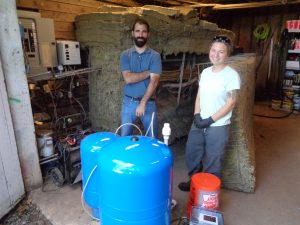 Modern American Gothic: Manta co-founder Ryan Powell and technician Kelly Morsey in front of the prototype HTL system
Modern American Gothic: Manta co-founder Ryan Powell and technician Kelly Morsey in front of the prototype HTL system
Conversion Process
The iterations of the HTL conversion process are not so visually apparent. There’s no boneyard for the various iterations that resulted in their efficient, cost effective process.
In this prototype, the algae slurry (about 200 gram/liter) is pumped through a high pressure pump to 2000 psi and is heated via a series of coils. A heat exchanger picks up energy from converted algae oil going out to a chiller and returns that energy to the process.
The high pressure algae slurry starts at a coil at ambient temp, then moves to another coil at the heat exchanger that takes it to 225-250 C then to 270-290 C. The substance circles around pipes and out to a chiller.
The details of what Manta has done to make the process cost effective and energy positive are proprietary.
The Army Corps of Engineers has expressed interest in this element of the Manta system.
As with the magnetized beads, Manta might have a separate business based on their economical HTL innovations.
Products
If you run the HTL hotter, you end up with light sweet crude (.25% sulfur—very sweet crude). If it runs less hot, the result is a heavy crude. The co-product is biochar which, if used as a soil amendment makes the process carbon negative.
At this point in the demonstration phase, Manta performs proprietary post processing to use the algae product in heating oil which meets the ASTM D396 spec for #2 fuel oil.
So far, two barrels have been tested using their product as residential heating oil and negotiations are in process for testing at the University of Maryland Center for Environmental Science where Powell invented and licensed the system while earning his Ph.D. at its Institute of Marine and Environmental Technology (IMET). They hope to eventually fuel the UMCES boilers that heat water for the oyster research ponds with this product.
Algae Agriculture
Every farm that employs this system will have its own characteristics with some baseline shared requirements.
To minimize costs and energy input, gravity-fed waters fill ponds from streams or field runoff. To minimize equipment costs and maintenance, ponds must have a clay base and sides.
Feeding the algae will depend on the types of wild algae, local water characteristics and the characteristics of local manure at each site, in each pond. Manta technicians test water samples at various locations regularly to determine if and when feeding is needed and appropriate times for harvest. Eventually, these will be automated as part of the system.
During the real-life pond testing, Manta has devised a number of ways to address the agricultural aspects of this project.
Part of the agreement with the fish hatchery property owners was that Manta could use the ponds for testing in exchange for, among other things, improving this area that had been left fallow and unused for hatching fish for a number of years. That meant clearing trees, shrubs and weeds and learning how to prevent them from growing back.
Having grown up on a farm in western Ohio where his family still farms, Powell was familiar with managing field drainage and weeds. Eventually, one element of their essential equipment became a tractor to keep pathways cleared and to prepare the ponds for the algae.
Duckweed (lemna) and creeping primrose liked what Manta had done for them in the ponds and grew well. Because the HTL part of the system can process these types of biomass, the Manta team tried to grind the duckweed into a slurry for the HTL process. With the equipment at hand, they couldn’t get the grind quite right. Eventually, this should work, but it’s a project for another day. For now, they are learning to control these by adjusting the depth of the ponds. As Powell reiterated, this is agriculture and challenges of pests and weeds can be expected and addressed.
Commercialization
Manta has made innovations in every step of its system from growing algae as an agricultural crop through production and sale of fuel oil or biocrude. Manta would like to commercialize the entire system; however, they may also find markets and discrete business opportunities for specific elements of the system: the magnetized nano-beads; the ceramic disk magnets; the HTL system.
All of these elements of the Manta system are ready to integrate into a continuous flow.
Next year the team wants to test whether it is better to go all the way from harvest to oil/biochar at each pond or to consolidate the conversion process for multiple ponds at a central location on land.
They will also put in place the business of selling the final products. They are using the Ensyn business plan as a model. Not only was the successful Ensyn concept also developed by the co-founders at a university, for Ensyn it was the University of Western Ontario; Ensyn's first biofuel products have been heating oil and biocrude with industrial heating and cooling customers and co-processing at oil refineries.
Manta Biofuel provides an example of industries needed by a climate change conscious world, an example of thoughtful, creative innovation and an example of an opportunity for investment leading to climate smart agricultural innovation, good paying jobs, and movement to replace fossil fuels and fossil carbon with renewables.
Banks, financiers and venture capitalists who want to be prosperous in the climate changed world must consider new concepts like Manta’s as a path to prosper in a new future full of never-existing-before demands and their never-existing-before solutions.
*Joanne Ivancic serves as executive director of Advanced Biofuels USA. (Photos by JIvancic unless otherwise noted)
H2Ohio Plan Recognizes Agriculture's Contributions to Sustainable Goals (Solutions from the Land)
Excerpt from Solutions from the Land: A plan detailed last week by Ohio Gov. Mike DeWine underscores the role agriculture will play in meeting the Solutions from the Land vision: By 2030, America's farms, ranches and forests are at the forefront of resolving food system, energy, environmental and climate challenges and achieving global sustainable development goals (SDGs).
Among the SDGs laid out by world leaders in 2015 and supported by SfL is the ensured availability and sustainable management of water.
The "H2Ohio" initiative was introduced in March in an early draft of the Ohio state budget, and on Nov. 14, DeWine rolled out the plan's specifics. H2Ohio is said by state officials to be an investment in targeted solutions to help reduce runoff through increased implementation of agricultural best practices. READ MORE
Update from Manta 1/08/21: On the technology front, we have developed a major improvement in our magnetic particle chemistry that dramatically improves separation efficiency. You can see a video of the new particles on our post about it here. We have also started the regulatory approval process for obtaining $50/barrel renewable energy credits. You can find the full post on this here. READ MORE
Nearly 55,000 articles in our online library!
Use the categories and tags listed below to access the nearly 50,000 articles indexed on this website.
Advanced Biofuels USA Policy Statements and Handouts!
- For Kids: Carbon Cycle Puzzle Page
- Why Ethanol? Why E85?
- Just A Minute 3-5 Minute Educational Videos
- 30/30 Online Presentations
- “Disappearing” Carbon Tax for Non-Renewable Fuels
- What’s the Difference between Biodiesel and Renewable (Green) Diesel? 2020 revision
- How to De-Fossilize Your Fleet: Suggestions for Fleet Managers Working on Sustainability Programs
- New Engine Technologies Could Produce Similar Mileage for All Ethanol Fuel Mixtures
- Action Plan for a Sustainable Advanced Biofuel Economy
- The Interaction of the Clean Air Act, California’s CAA Waiver, Corporate Average Fuel Economy Standards, Renewable Fuel Standards and California’s Low Carbon Fuel Standard
- Latest Data on Fuel Mileage and GHG Benefits of E30
- What Can I Do?
Donate
DonateARCHIVES
- December 2025
- November 2025
- October 2025
- September 2025
- August 2025
- July 2025
- June 2025
- May 2025
- April 2025
- March 2025
- February 2025
- January 2025
- December 2024
- November 2024
- October 2024
- September 2024
- August 2024
- July 2024
- June 2024
- May 2024
- April 2024
- March 2024
- February 2024
- January 2024
- December 2023
- November 2023
- October 2023
- September 2023
- August 2023
- July 2023
- June 2023
- May 2023
- April 2023
- March 2023
- February 2023
- January 2023
- December 2022
- November 2022
- October 2022
- September 2022
- August 2022
- July 2022
- June 2022
- May 2022
- April 2022
- March 2022
- February 2022
- January 2022
- December 2021
- November 2021
- October 2021
- September 2021
- August 2021
- July 2021
- June 2021
- May 2021
- April 2021
- March 2021
- February 2021
- January 2021
- December 2020
- November 2020
- October 2020
- September 2020
- August 2020
- July 2020
- June 2020
- May 2020
- April 2020
- March 2020
- February 2020
- January 2020
- December 2019
- November 2019
- October 2019
- September 2019
- August 2019
- July 2019
- June 2019
- May 2019
- April 2019
- March 2019
- February 2019
- January 2019
- December 2018
- November 2018
- October 2018
- September 2018
- August 2018
- July 2018
- June 2018
- May 2018
- April 2018
- March 2018
- February 2018
- January 2018
- December 2017
- November 2017
- October 2017
- September 2017
- August 2017
- July 2017
- June 2017
- May 2017
- April 2017
- March 2017
- February 2017
- January 2017
- December 2016
- November 2016
- October 2016
- September 2016
- August 2016
- July 2016
- June 2016
- May 2016
- April 2016
- March 2016
- February 2016
- January 2016
- December 2015
- November 2015
- October 2015
- September 2015
- August 2015
- July 2015
- June 2015
- May 2015
- April 2015
- March 2015
- February 2015
- January 2015
- December 2014
- November 2014
- October 2014
- September 2014
- August 2014
- July 2014
- June 2014
- May 2014
- April 2014
- March 2014
- February 2014
- January 2014
- December 2013
- November 2013
- October 2013
- September 2013
- August 2013
- July 2013
- June 2013
- May 2013
- April 2013
- March 2013
- February 2013
- January 2013
- December 2012
- November 2012
- October 2012
- September 2012
- August 2012
- July 2012
- June 2012
- May 2012
- April 2012
- March 2012
- February 2012
- January 2012
- December 2011
- November 2011
- October 2011
- September 2011
- August 2011
- July 2011
- June 2011
- May 2011
- April 2011
- March 2011
- February 2011
- January 2011
- December 2010
- November 2010
- October 2010
- September 2010
- August 2010
- July 2010
- June 2010
- May 2010
- April 2010
- March 2010
- February 2010
- January 2010
- December 2009
- November 2009
- October 2009
- September 2009
- August 2009
- July 2009
- June 2009
- May 2009
- April 2009
- March 2009
- February 2009
- January 2009
- December 2008
- November 2008
- October 2008
- September 2008
- August 2008
- July 2008
- June 2008
- May 2008
- April 2008
- March 2008
- February 2008
- January 2008
- December 2007
- November 2007
- October 2007
- September 2007
- August 2007
- June 2007
- February 2007
- January 2007
- October 2006
- April 2006
- January 2006
- April 2005
- December 2004
- November 2004
- December 1987
CATEGORIES
- About Us
- Advanced Biofuels Call to Action
- Aviation Fuel/Sustainable Aviation Fuel (SAF)
- BioChemicals/Renewable Chemicals
- BioRefineries/Renewable Fuel Production
- Business News/Analysis
- Cooking Fuel
- Education
- 30/30 Online Presentations
- Competitions, Contests
- Earth Day 2021
- Earth Day 2022
- Earth Day 2023
- Earth Day 2024
- Earth Day 2025
- Executive Training
- Featured Study Programs
- Instagram TikTok Short Videos
- Internships
- Just a Minute
- K-12 Activities
- Mechanics training
- Online Courses
- Podcasts
- Scholarships/Fellowships
- Teacher Resources
- Technical Training
- Technician Training
- University/College Programs
- Events
- Coming Events
- Completed Events
- More Coming Events
- Requests for Speakers, Presentations, Posters
- Requests for Speakers, Presentations, Posters Completed
- Webinars/Online
- Webinars/Online Completed; often available on-demand
- Federal Agency/Executive Branch
- Agency for International Development (USAID)
- Agriculture (USDA)
- Commerce Department
- Commodity Futures Trading Commission
- Congressional Budget Office
- Defense (DOD)
- Air Force
- Army
- DARPA (Defense Advance Research Projects Agency)
- Defense Logistics Agency
- Marines
- Navy
- Education Department
- Energy (DOE)
- Environmental Protection Agency
- Federal Energy Regulatory Commission (FERC)
- Federal Reserve System
- Federal Trade Commission
- Food and Drug Administration
- General Services Administration
- Government Accountability Office (GAO)
- Health and Human Services (HHS)
- Homeland Security
- Housing and Urban Development (HUD)
- Interior Department
- International Trade Commission
- Joint Office of Energy and Transportation
- Justice (DOJ)
- Labor Department
- National Academies of Sciences Engineering Medicine
- National Aeronautics and Space Administration
- National Oceanic and Atmospheric Administration
- National Research Council
- National Science Foundation
- National Transportation Safety Board (NTSB)
- Occupational Safety and Health Administration
- Overseas Private Investment Corporation
- Patent and Trademark Office
- Securities and Exchange Commission
- State Department
- Surface Transportation Board
- Transportation (DOT)
- Federal Aviation Administration
- National Highway Traffic Safety Administration (NHTSA)
- Pipeline and Hazardous Materials Safety Admin (PHMSA)
- Treasury Department
- U.S. Trade Representative (USTR)
- White House
- Federal Legislation
- Federal Litigation
- Federal Regulation
- Feedstocks
- Agriculture/Food Processing Residues nonfield crop
- Alcohol/Ethanol/Isobutanol
- Algae/Other Aquatic Organisms/Seaweed
- Atmosphere
- Carbon Dioxide (CO2)
- Field/Orchard/Plantation Crops/Residues
- Forestry/Wood/Residues/Waste
- hydrogen
- Manure
- Methane/Biogas
- methanol/bio-/renewable methanol
- Not Agriculture
- RFNBO (Renewable Fuels of Non-Biological Origin)
- Seawater
- Sugars
- water
- Funding/Financing/Investing
- grants
- Green Jobs
- Green Racing
- Health Concerns/Benefits
- Heating Oil/Fuel
- History of Advanced Biofuels
- Infrastructure
- Aggregation
- Biofuels Engine Design
- Biorefinery/Fuel Production Infrastructure
- Carbon Capture/Storage/Use
- certification
- Deliver Dispense
- Farming/Growing
- Precursors/Biointermediates
- Preprocessing
- Pretreatment
- Terminals Transport Pipelines
- International
- Abu Dhabi
- Afghanistan
- Africa
- Albania
- Algeria
- Angola
- Antarctica
- Arctic
- Argentina
- Armenia
- Aruba
- Asia
- Asia Pacific
- Australia
- Austria
- Azerbaijan
- Bahamas
- Bahrain
- Bangladesh
- Barbados
- Belarus
- Belgium
- Belize
- Benin
- Bermuda
- Bhutan
- Bolivia
- Bosnia and Herzegovina
- Botswana
- Brazil
- Brunei
- Bulgaria
- Burkina Faso
- Burundi
- Cambodia
- Cameroon
- Canada
- Caribbean
- Central African Republic
- Central America
- Chad
- Chile
- China
- Colombia
- Congo
- Congo, Democratic Republic of
- Costa Rica
- Croatia
- Cuba
- Cyprus
- Czech Republic
- Denmark
- Dominican Republic
- Dubai
- Ecuador
- Egypt
- El Salvador
- Equatorial Guinea
- Estonia
- Eswatini/Swaziland
- Ethiopia
- European Union (EU)
- Fiji
- Finland
- France
- French Guiana
- Gabon
- Georgia
- Germany
- Ghana
- Global South
- Greece
- Greenland
- Grenada
- Guatemala
- Guinea
- Guyana
- Haiti
- Honduras
- Hong Kong
- Hungary
- Iceland
- India
- Indonesia
- Iran
- Iraq
- Ireland
- Israel
- Italy
- Ivory Coast
- Jamaica
- Japan
- Jersey
- Jordan
- Kazakhstan
- Kenya
- Korea
- Kosovo
- Kuwait
- Laos
- Latin America
- Latvia
- Lebanon
- Liberia
- Lithuania
- Luxembourg
- Macedonia
- Madagascar
- Malawi
- Malaysia
- Maldives
- Mali
- Malta
- Marshall Islands
- Mauritania
- Mauritius
- Mexico
- Middle East
- Moldova
- Monaco
- Mongolia
- Morocco
- Mozambique
- Myanmar/Burma
- Namibia
- Nepal
- Netherlands
- New Guinea
- New Zealand
- Nicaragua
- Niger
- Nigeria
- North Africa
- North America
- North Korea
- Northern Ireland
- Norway
- Oman
- Pakistan
- Panama
- Papua New Guinea
- Paraguay
- Peru
- Philippines
- Poland
- Portugal
- Qatar
- Republic of
- Romania
- Russia
- Rwanda
- Saudi Arabia
- Scotland
- Senegal
- Serbia
- Sierra Leone
- Singapore
- Slovakia/Slovak Republic
- Slovenia
- Solomon Islands
- South Africa
- South America
- South Korea
- South Sudan
- Southeast Asia
- Spain
- Sri Lanka
- Sudan
- Suriname
- Sweden
- Switzerland
- Taiwan
- Tanzania
- Thailand
- Timor-Leste
- Togo
- Trinidad and Tobago
- Tunisia
- Turkey
- Uganda
- UK (United Kingdom)
- Ukraine
- United Arab Emirates UAE
- Uruguay
- Uzbekistan
- Vatican
- Venezuela
- Vietnam
- Wales
- Zambia
- Zanzibar
- Zimbabwe
- Marine/Boat Bio and Renewable Fuel/MGO/MDO/SMF
- Marketing/Market Forces and Sales
- Opinions
- Organizations
- Original Writing, Opinions Advanced Biofuels USA
- Policy
- Presentations
- Biofuels Digest Conferences
- DOE Conferences
- Bioeconomy 2017
- Bioenergy2015
- Biomass2008
- Biomass2009
- Biomass2010
- Biomass2011
- Biomass2012
- Biomass2013
- Biomass2014
- DOE Project Peer Review
- Other Conferences/Events
- R & D Focus
- Carbon Capture/Storage/Use
- Co-Products
- Feedstock
- Logistics
- Performance
- Process
- Vehicle/Engine/Motor/Aircraft/Boiler/Ship
- Yeast
- Railroad/Train/Locomotive Fuel
- Resources
- Books Web Sites etc
- Business
- Definition of Advanced Biofuels
- Find Stuff
- Government Resources
- Scientific Resources
- Technical Resources
- Tools/Decision-Making
- Rocket/Missile Fuel
- Sponsors
- States
- Alabama
- Alaska
- Arizona
- Arkansas
- California
- Colorado
- Connecticut
- Delaware
- Florida
- Georgia
- Hawai'i
- Idaho
- Illinois
- Indiana
- Iowa
- Kansas
- Kentucky
- Louisiana
- Maine
- Maryland
- Massachusetts
- Michigan
- Midwest
- Minnesota
- Mississippi
- Missouri
- Montana
- Native American tribal nation lands
- Nebraska
- Nevada
- New Hampshire
- New Jersey
- New Mexico
- New York
- North Carolina
- North Dakota
- Ohio
- Oklahoma
- Oregon
- Pennsylvania
- Puerto Rico
- Rhode Island
- South Carolina
- South Dakota
- Tennessee
- Texas
- Utah
- Vermont
- Virginia
- Washington
- Washington DC
- West Coast
- West Virginia
- Wisconsin
- Wyoming
- Sustainability
- Uncategorized
- What You Can Do
tags
© 2008-2023 Copyright Advanced BioFuels USA. All Rights reserved.


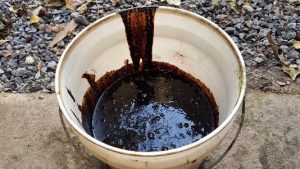
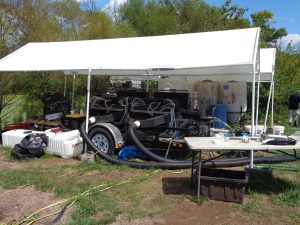

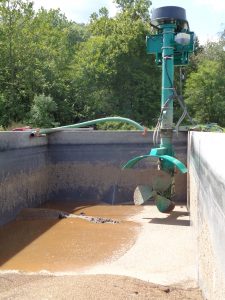
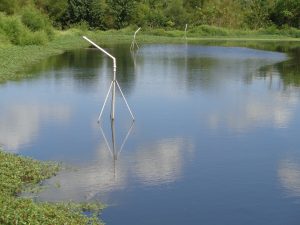
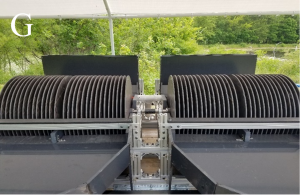


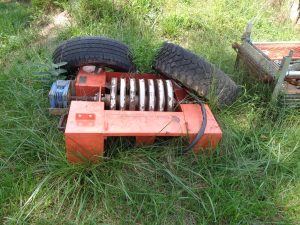

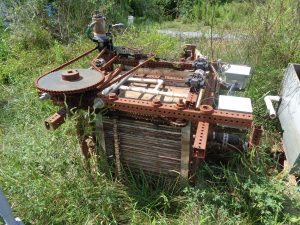
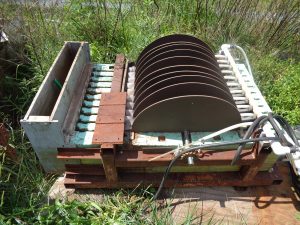

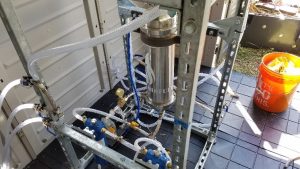
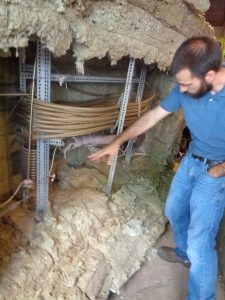
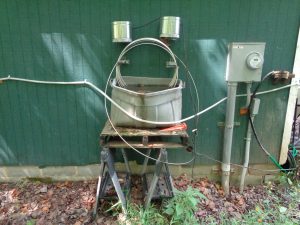
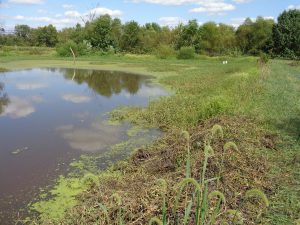

.jpg)





Comments are closed.